2024 Subaru BRZ tS Review: A Joy on Track
Last year we had our first go with the 2024 Subaru BRZ tS, amid a media launch event in Italy. Given the chassis upgrades and mild aesthetic tweaks, contributor Lyn Woodward called it “epic amounts of fun.” High praise indeed, especially because the ordinary BRZ already delivers such sharp feedback and driving enjoyment. However, even a tired, rented, cigarette-reeking Fiat 500 feels fun on Italian mountain roads. A more pertinent concern is how this extra-special Subie holds up on potholed American pavement. And, just as important for a car so proudly “tuned by STI,” how does it perform on a local road course?
The state of Michigan is oh-so obliging in the former regard, and for the latter, we visited the historic Waterford Hills Road Racing circuit outside of Detroit. The course is small, tight, and technical; what it lacks in high-speed straightaways and hard braking it makes up for by demanding consistency and momentum. Waterford’s detractors deride it as a go-kart course, but the private track event we joined was a perfect fit for the modestly powered BRZ and the gaggle of ST-badged Fords, Miatas, and lightweight single-seat track cars in the paddock.

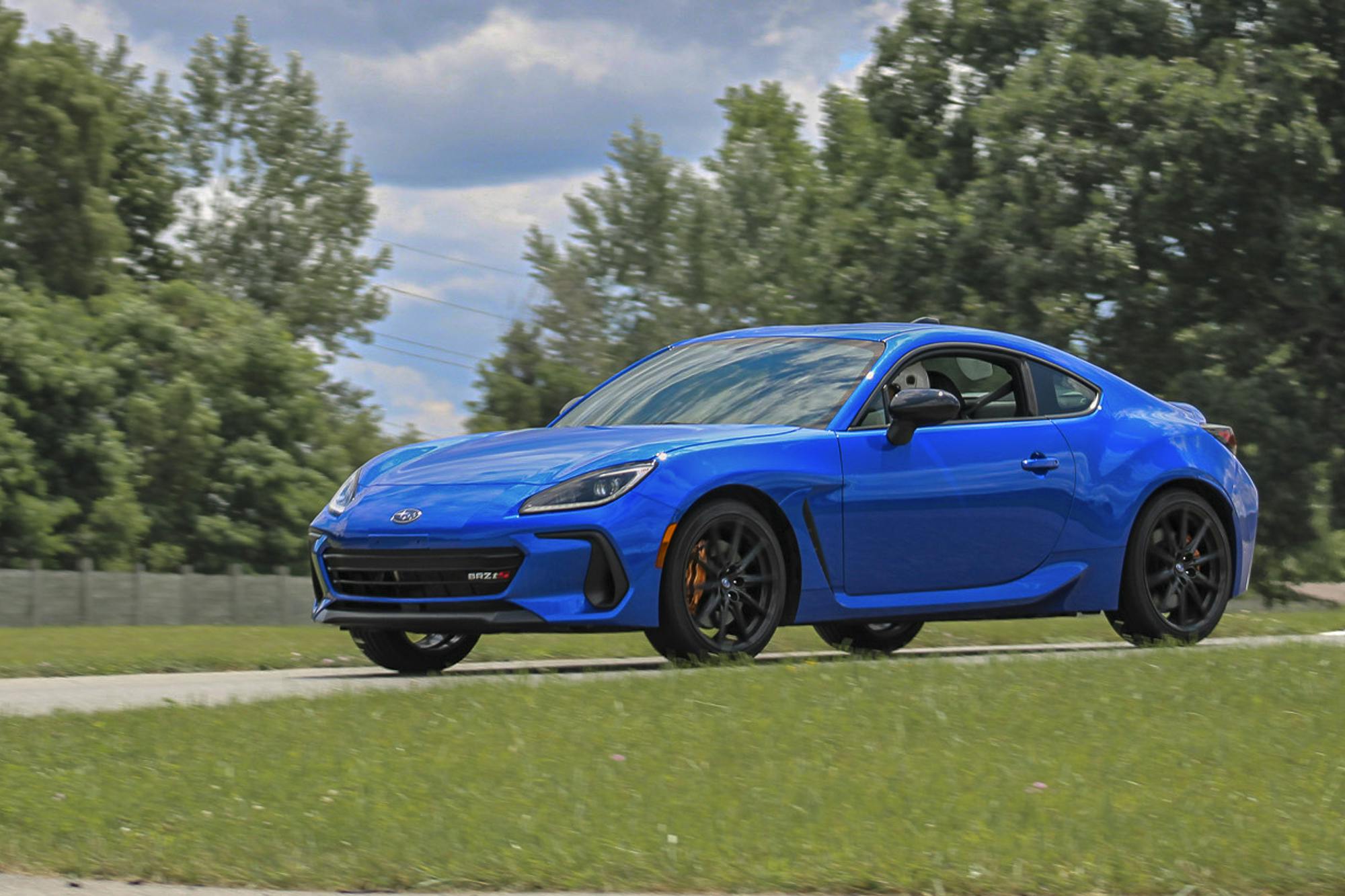
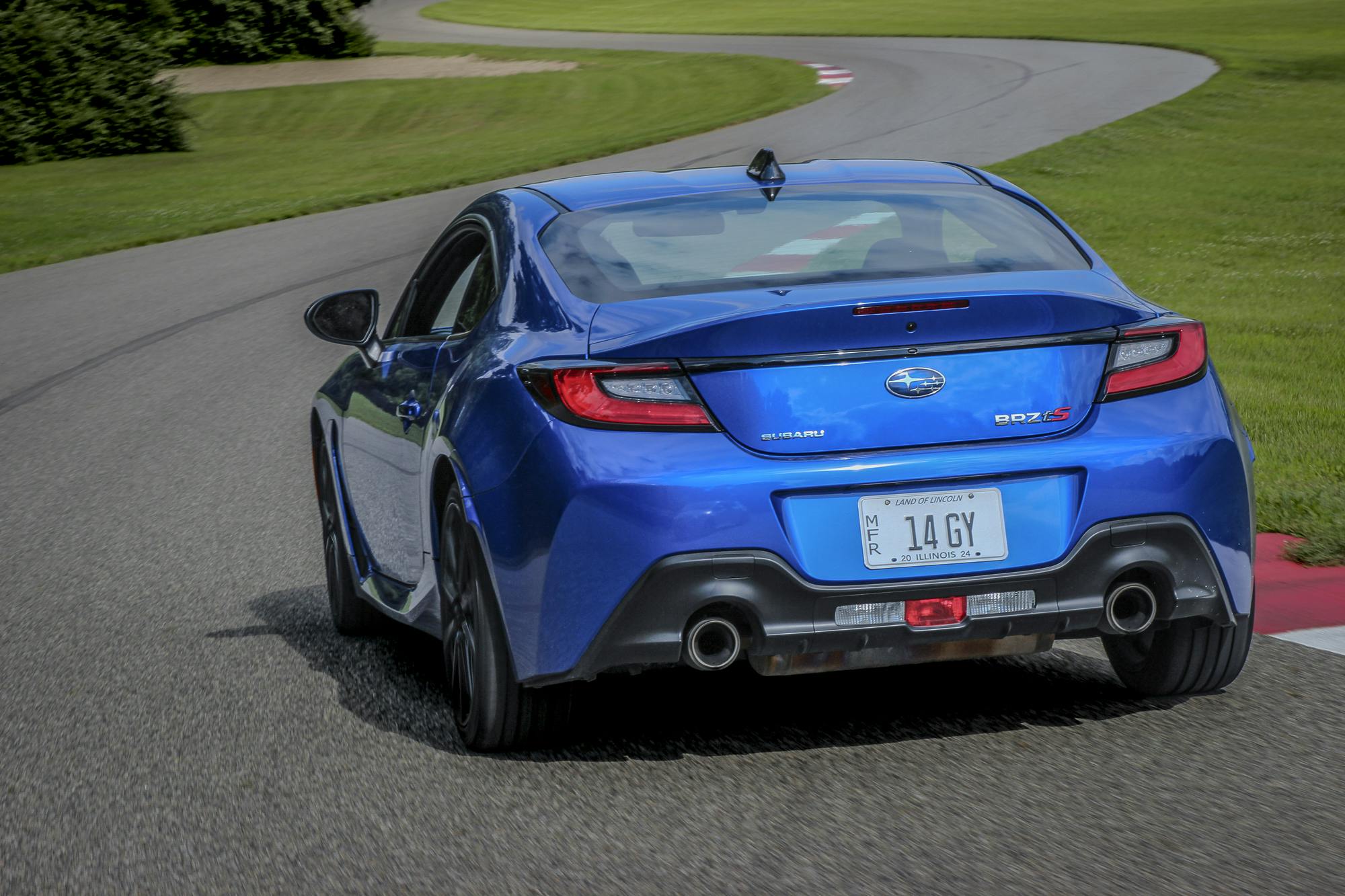
We say “modestly powered” because the BRZ tS relies on the same 2.4-liter, naturally aspirated flat-four as the BRZ Limited on which it is based. That means 228 hp and 184 lb-ft of torque, routed to a six-speed manual gearbox in the case of our WR Blue Pearl test vehicle. (Only about a quarter of BRZ buyers decline the third pedal in favor of a six-speed automatic.)
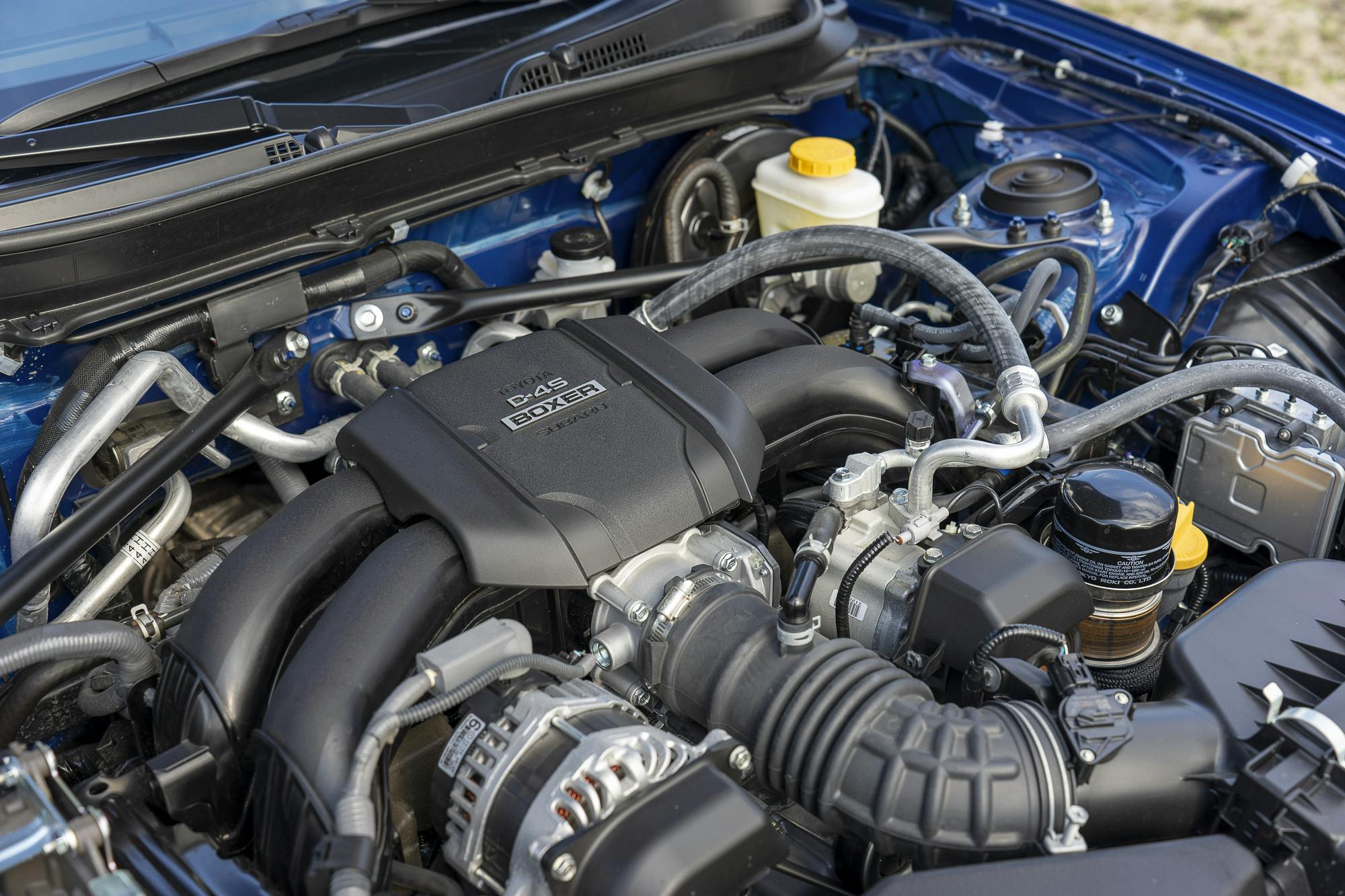
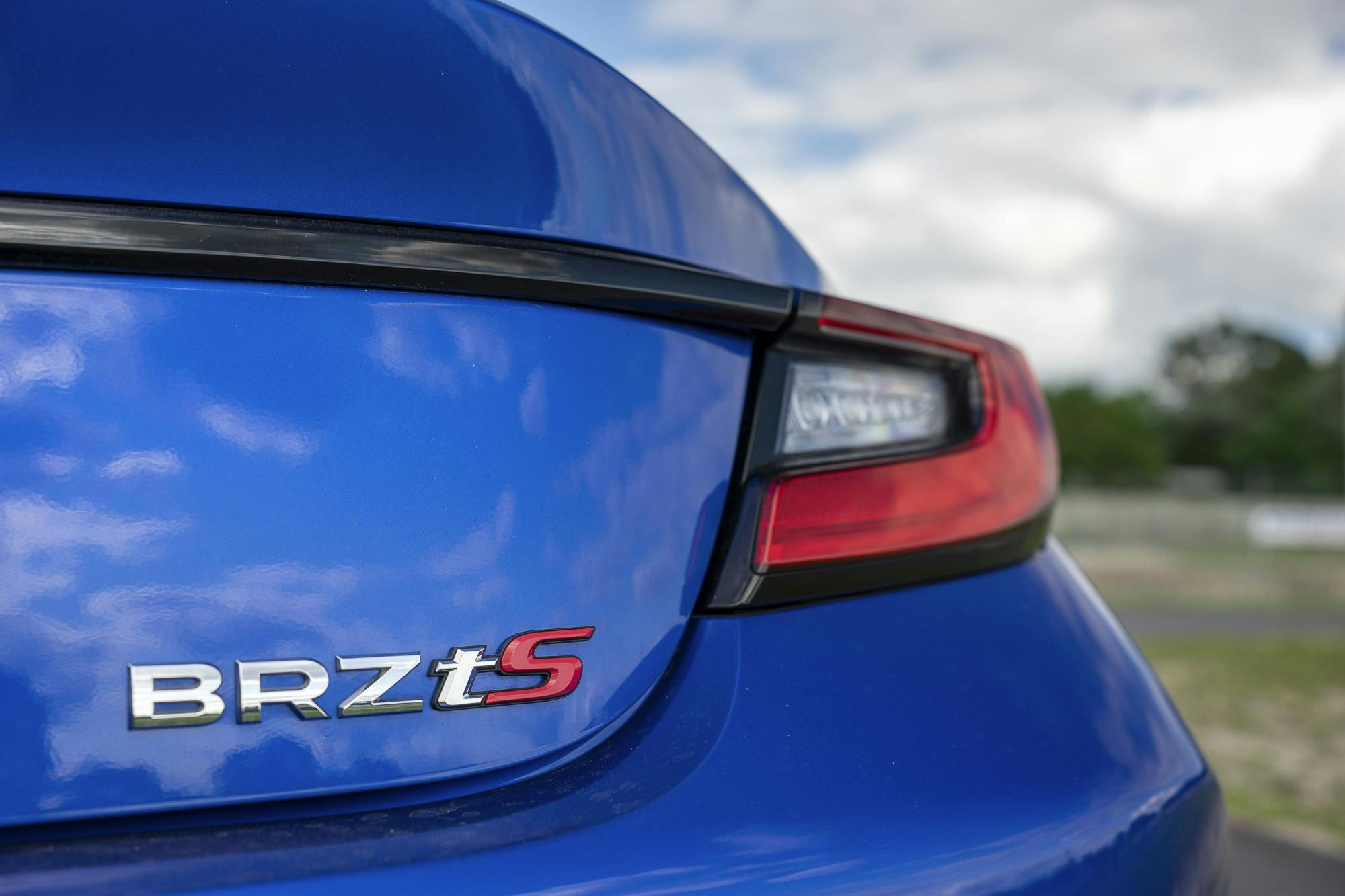
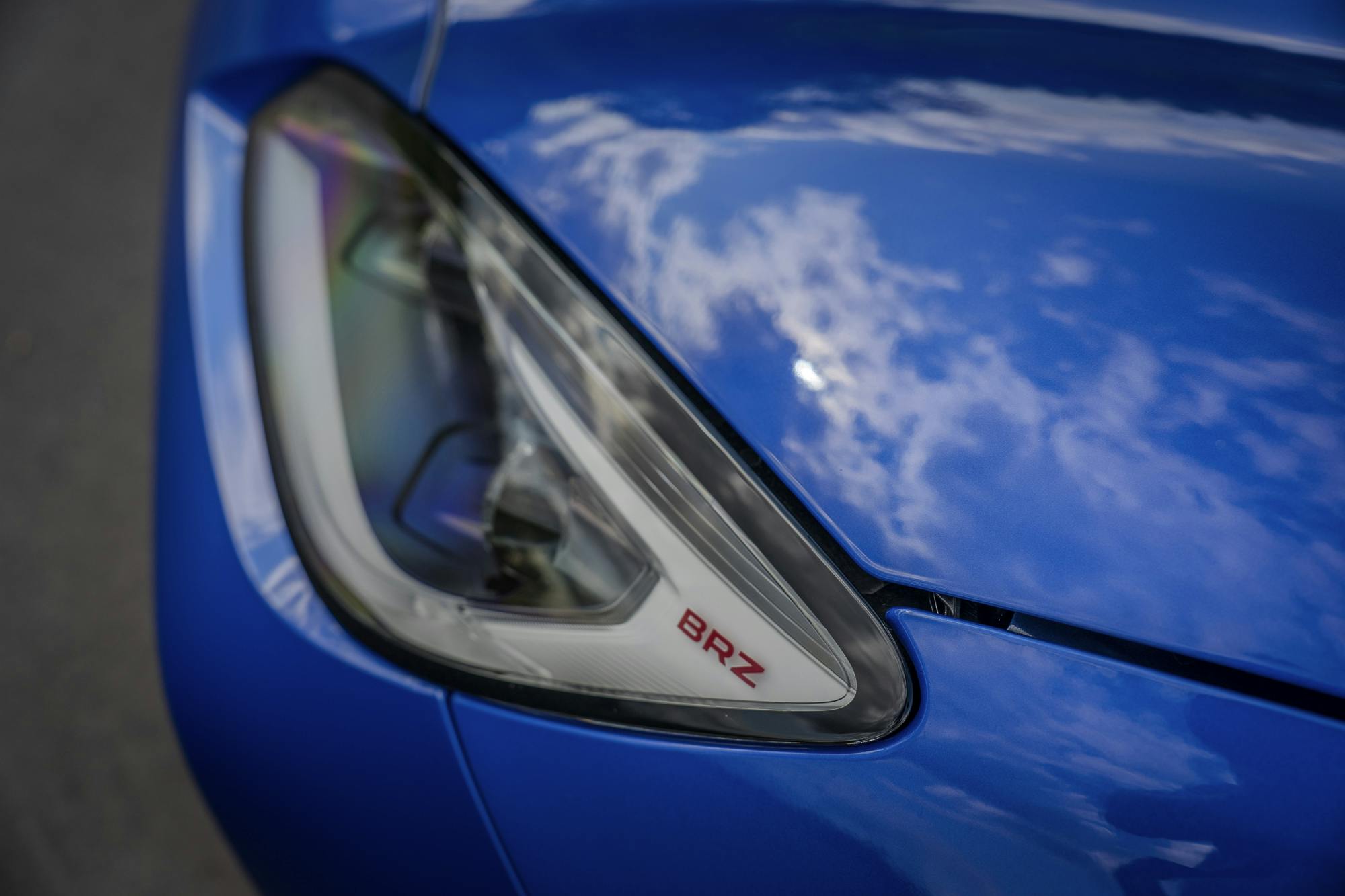
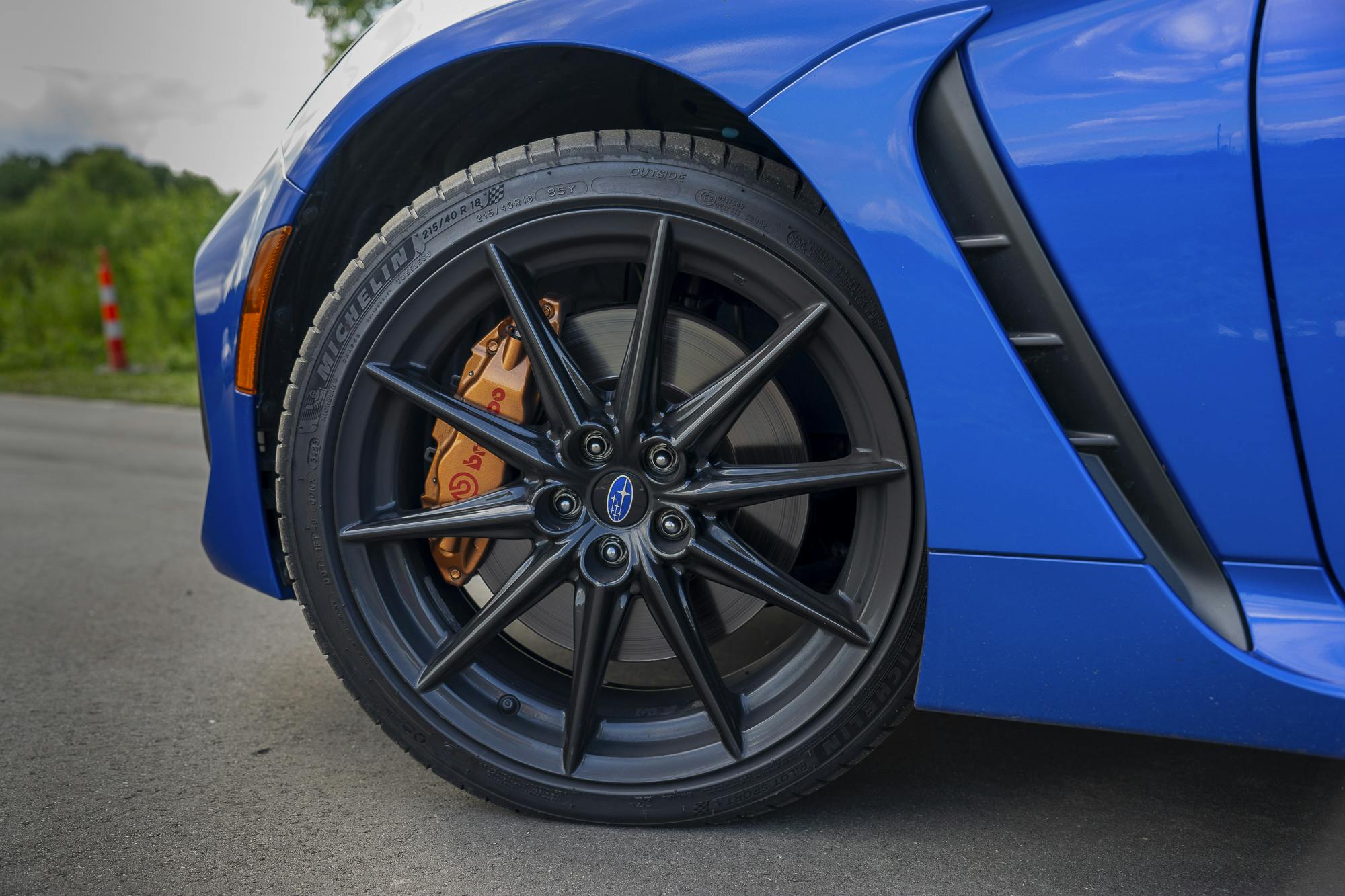
The tS formula aims to shore up the BRZ’s braking and handling and add a dollop visual flair across the interior and exterior. Stopping comes courtesy of Brembo brakes—four-piston fronts and two-piston rears—with stronger pads and larger rotors. Those are sized at 12.8 and 12.4 inches, respectively, compared with 11.6 and 11.4 inches on the Limited. Improved handling comes courtesy of Hitachi dampers, front and rear. The fluid-filled, strut-type dampers up front are semi-active; a solenoid on each damper responds to a signal from the chassis computer, which monitors inputs such as ride height and steering angle. The solenoid engages internal valves to provide optimal damping force. STI also tunes the rear setup (passive, single-stage, and designed for double-wishbone suspension) to work in concert with the fronts.
Specs: 2024 Subaru BRZ tS
- Price: $36,465
- Powertrain: 2.4-liter H-4; six-speed manual transmission (six-speed auto available)
- Output: 228 hp @ 7000 rpm; 184 lb-ft @ 3700 rpm
- Layout: Front-engine, two-door, four-passenger, rear-wheel-drive coupe
- Weight: 2851 pounds
- 0–60 mph: 5.5 seconds (est.)
- Top speed: 140 mph (governor-limited)
- EPA Fuel Economy: 20/27/22 mpg (city/hwy/combined)
- Competitors: Toyota GR86, Mazda Miata RF, Hyundai Elantra N, VW Jetta GLI
Mechanically, that’s all there is to it. Die-hard BRZ fans may recall that the first-generation, 2018 tS included upgraded 18-inch wheels and Michelin Pilot Sport 4 tires, improving upon the Performance Pack model’s 17-inchers and slippery Michelin Primacy rubber. These days, that kit comes standard even on the 2024 BRZ Limited.
The 2024-model-year tS costs $2650 more than the Limited, totaling $36,465. (For 2025 the price goes up $950, to $37,415.) Subaru now treats the tS as its own trim, rather than a limited-volume special edition.

For under $3000, the BRZ tS’s upgrades feel like a bargain. The biggest difference is body control; compared with the Limited, the tS stays flatter even under heavy load. Ride polish is the other big improvement. In Waterford’s esses (between turns 7 and 8) it helps to attack one particular curb to help pivot the BRZ; the car settles assuredly and responds predictably with the wheels turned. Waterford isn’t hard on brakes, so we won’t claim we really put them to the ultimate test, but several hours of hard lapping produced no noticeable fade, despite stock fluid and pads. On the street, the BRZ is liveable—softer and more forgiving by a mile than, say, the Ford Focus or Fiesta ST. It tracks true on the highway but you do notice every expansion joint. Hey, if you don’t want a sports car, don’t get one.
Otherwise, the tS is very much the BRZ we know and love. It is stylish, tidily proportioned, ergonomically dialed-in for drivers, and just plain friendly. With a 0-60 sprint of about 5.5 seconds, you wouldn’t call it fast, but the BRZ’s four-pot and its more progressive mid-range torque curve is such an improvement on the breathless 2.0-liter it replaces that it’s hard to complain. Max power arrives at 7000 rpm, and the engine feels more than happy up there despite the somewhat underwhelming wheezy noise it produces. And, of course, there is the matter of weight: 2851 pounds. The center of gravity is delightfully low, allowing for quick direction changes and a sense of immediacy to the steering. Balance is lovely. We laid down lap after lap without the BRZ tiring us out.

Frequent track-goers will love the low seating position, which allows for a helmet with space to spare. Visibility through the rear glass is more than adequate, and the side mirrors are nice and large. The steering wheel is small, dainty even, and has a thin rim that feels great in the hands. The shifter is slightly notchy, and the pedal box is perfectly set up for heel-toe—important in a car without automatic rev-matching. When the rear seats are folded, it is possible to fit a complete set of wheels and tires, a modest tool kit, a camping chair, and a portable air compressor. As much as we love the Miata, such is not possible in Mazda’s little roadster.

Whereas the outgoing BRZ tS used red as its accent color, this time around the hue is blue, adorning contrast stitching on the shift boot, steering wheel, parking brake boot, seat bolsters, and a leather stripe for the seat bottoms. Other niceties include a nubuck suede-like finish for the instrument cluster visor and door trim. The cluster graphics include STI graphics with red details. Aside from a couple of tS badges on the exterior, the trim-specific gray wheels, and gold-painted brake calipers, there is little to distinguish this car from a BRZ Limited.
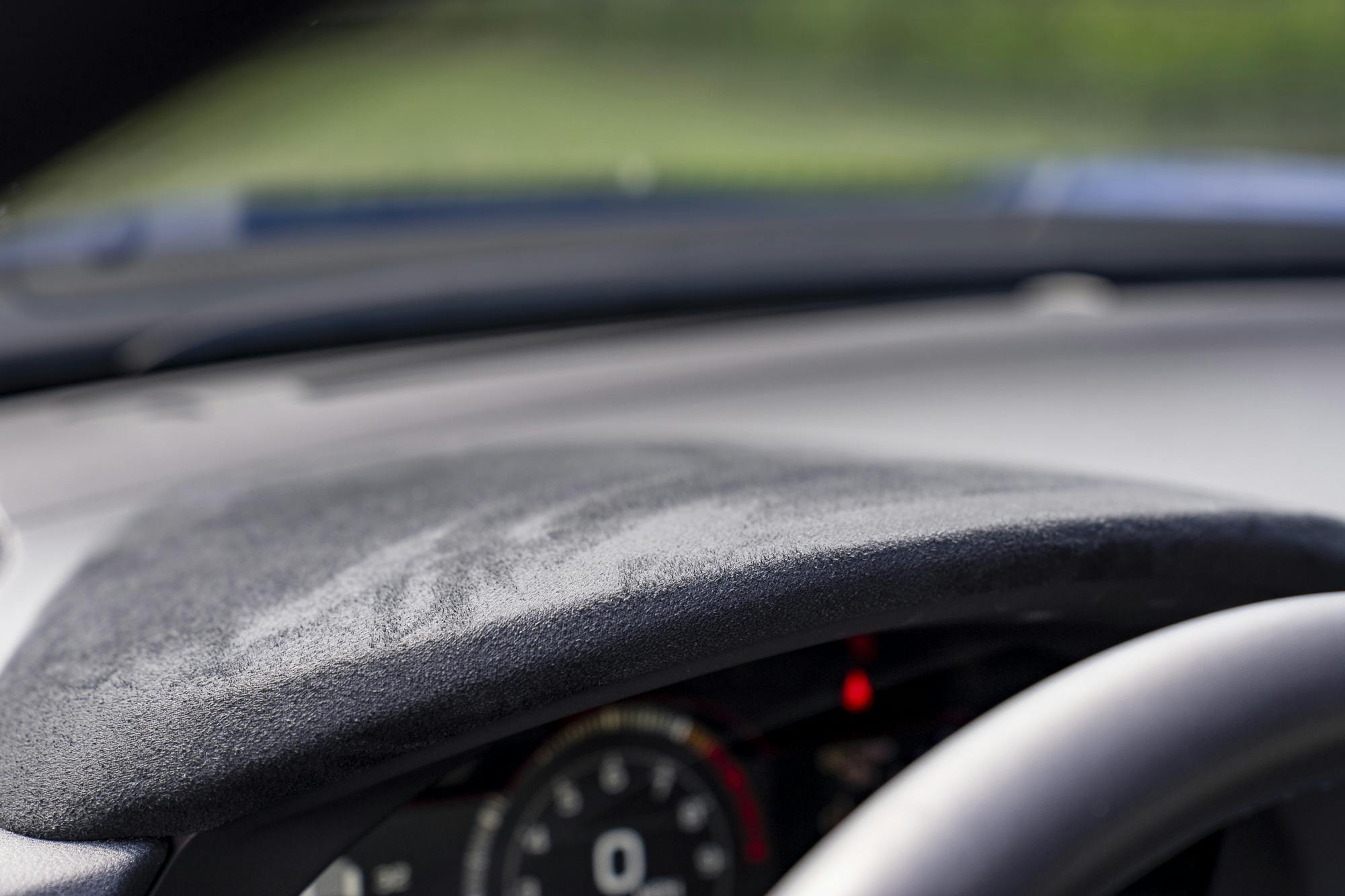
In some respects that’s good. The new tS, for example, looks a bit more mature than the 2018 version with its prominent, adjustable rear wing. And the bucket seats, as Kevin Madsen noted in our first drive of the 2022 BRZ, offer excellent bolstering for the upper back and shoulders. In other respects, some might wish for the top-spec tS to feel a bit more special. Hyundai’s standard-issue Elantra N, for about the same price, offers a much more vibrant and high-tech interior. If that kind of thing matters to you, the BRZ and its low-rent screens will not make your neurons fizz and pop. Our only other quibbles: a tendency to bang one’s left knee upon exiting the driver’s seat, and a considerable amount of buffeting at about 50 mph, with the windows at all open.
It should be said that $36,000 sounds like a lot. Inflation is at fault: a 200-hp 2013 BRZ Limited would actually cost more—$38,195—if adjusted to today’s dollar from its $28,265 MSRP. In 2003, a 142-hp Miata commanded $21,800, or $37,300 today. Going back even further, a 200-hp, five-speed 1994 Toyota MR2 Turbo rang in at $27,975—a whopping $59,422 in today’s coin.

For the enthusiasts who can afford it, BRZs are proving hard to come by. Subaru has moved just 2323 examples this year, compared with 4188 in all of 2023. Product Communications Manager Aaron Cole explains that Subaru is “selling every [BRZ] we make,” and that the Gunma, Japan factory is “constrained by capacity.” Toyota’s GR86 is made in the same plant, and just north of 9600 examples of that car have sold in the U.S. over the same period. Which is to say, Subaru can build more BRZs; it’s simply giving more volume to Toyota.
The tS is a wonderful little car—approachable and rewarding on track, accommodating and satisfying on the road. All this can be said of the standard BRZ, especially if your track ambitions are minimal, or if you are the kind of owner that enjoys plumbing the depths of the aftermarket for performance upgrades. So, in your search for a BRZ, tS or otherwise, we say to you, ganbatte!

2024 Subaru BRZ tS (Manual)
Price: $36,465
Highs: Delightful feedback, whether on the street or track. Ergonomic and driver-focused interior. tS bits meaningfully enhance performance and are gentle on the standard car’s design.
Lows: Relatively low-tech interior. Wind buffeting at speed. Somewhat difficult ingress and egress, especially if you like your patella.
Summary: The tS adds capability to the already-entertaining BRZ, and at a compelling price. The standard car provides similar driving pleasure.
























Having experienced Subaru’s modern EyeSight “safety” package, I’m interested in your opinion the execution here. I found it to be incredibly heavy handed, inaccurate and frankly dangerous in an Outback that I owned for all of 1600 miles and happily offloaded at a lost. The outback’s 2.4T would be a compelling addition to the BRZ though.
I didn’t find it to be problematic — I generally turn off lane-keep assist in all cars unless I am on a long highway drive when I feel like it comes in handy. On adaptive cruise I always set the maximum distance, and it never acted out of sorts during the 80 or so highway miles I put on this car. Lane-departure warning is always welcome in any car, as is rear cross traffic alert/auto braking.
Have they fixed the excess gasket material in the oil pan yet?
“With a 0-60 sprint of about 5.5 seconds, you wouldn’t call it fast….”
My how times have changed! That would have been Big-Block Corvette territory no so long ago.
Well, to me, anyway….
Yes but old big block Corvettes were more suited to running the quarter mile on slicks than running 0 to 60 on skinny, bias ply tires.